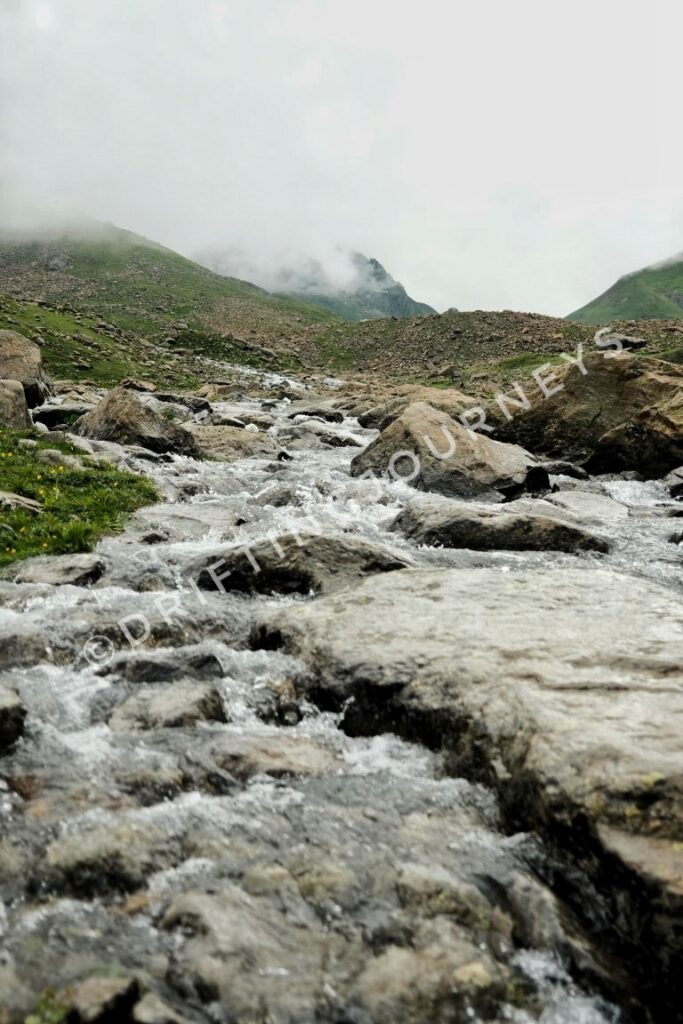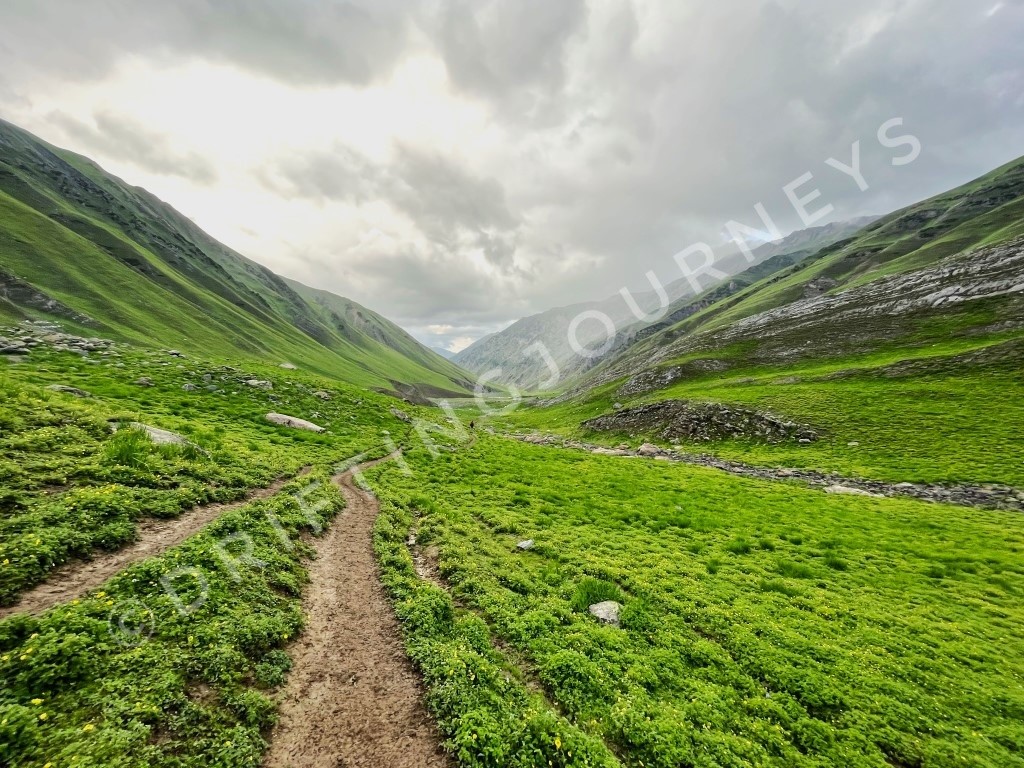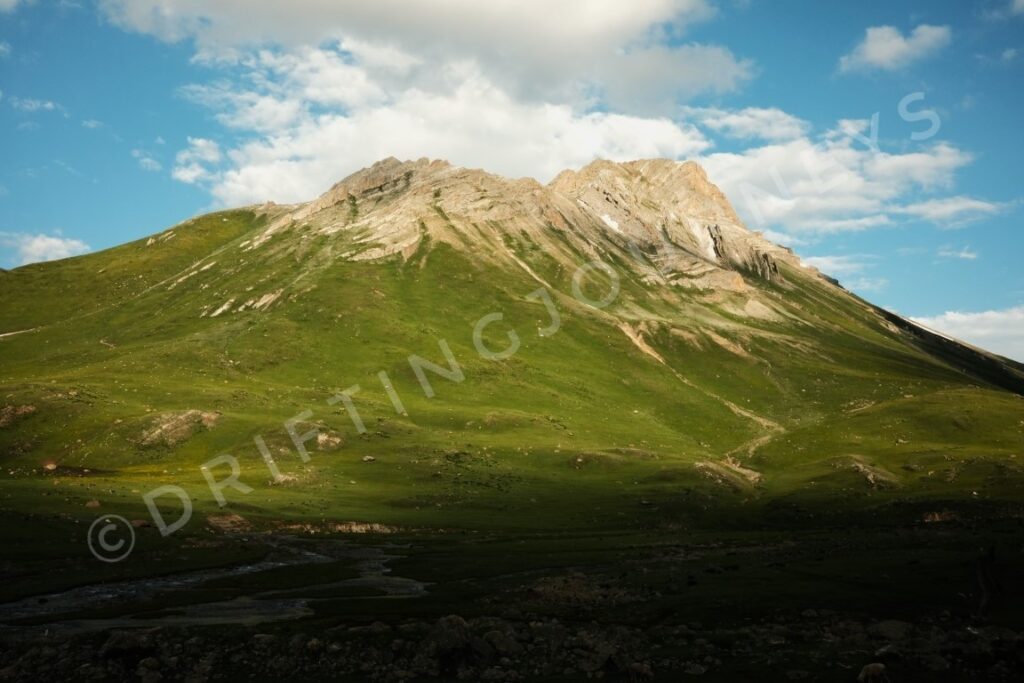Trekking Through Paradise: A Detailed Insight into the Kashmir Great Lakes Trek
Prelude
“Agar Firdaus bar roo-e-zameen ast/ Hameen ast-o hameen ast-o hameen ast” (If there’s Paradise on earth, It’s this, it’s this, it’s this). These immortal words by the Persian poet Amir Khusrow perfectly capture the essence of Kashmir. Nestled between the Himalayas and the Pir Panjal ranges, this region is a testament to nature’s magnificence. With towering snow-capped mountains, serene meadows, and winding rivers, Kashmir is a landscape of unparalleled beauty. The allure of this Himalayan paradise beckoned us, filling us with anticipation and excitement for the journey ahead. There is an undeniable mystique surrounding Kashmir, and we were eager to immerse ourselves in its wonders through a trekking adventure.Prepping for Adventure
When you search “Kashmir Great Lakes” (famously known as KGL) on Google, you’ll find numerous trekking groups eager to offer you this unforgettable experience. Due to the sensitive nature of the state, trekking here must be done with a local authorized guide at all times. Opting for a reputable trekking company is the best approach, as they arrange necessary permits, transportation from Srinagar to the base camp and back, as well as food, accommodation, and porter services if needed.

The ideal time for this trek is from July to September, with early October also feasible. Beyond this period, the valley experiences freezing temperatures at night, making camping uncomfortable. The valley becomes inaccessible due to thick snow in the other months, although recent changes in snow patterns due to global warming have extended the trekking season. It’s advisable to consult local trek companies for updated information. The trek spans 8 days, including a buffer day recommended for long and high-altitude treks like KGL.
Pack that sack
Adventures are most rewarding when you’re well-prepared. For insights on what essentials to pack for this trek, visit this blog:
Your Complete Guide to Packing for Adventure
Given that you’ll be trekking during the monsoon season, it’s essential to have a waterproof jacket and covers for your bags and electronic gear to keep them dry.
In addition to these items, remember to bring along plenty of enthusiasm and resilience, as treks can challenge our endurance. Trust me, every drop of sweat will be worth the breathtaking experience!
Unraveling KGL day-by-day
Embark on a journey through the pristine alpine lakes, majestic valleys, and picturesque meadows of the Kashmir Great Lakes trek. This legendary trail spans from Sonamarg (the base camp) to Naranag, offering approx. 80-kilometer odyssey through some of the most breathtaking landscapes in the region.Day 1: Setting Off from Srinagar to Shitkari
Your adventure begins with a scenic 4-hour drive from Srinagar to Shitkari near Sonamarg. As you traverse winding roads flanked by verdant rice fields and fragrant apple orchards, anticipation builds for the adventures that lie ahead.
Upon arrival at the basecamp, nestled beside a babbling stream that meanders towards the Sindh river, take a moment to soak in the tranquil beauty of the Kashmir valley. This day serves as an opportunity to familiarize yourself with your trek mates, relax, and prepare for the adventure ahead

Day 2: Hiking to Nichnai Camp
The true test of endurance begins as you lace up your boots and set off on the trail. Today’s hike covers approximately 14 kilometers, leading you through a kaleidoscope of landscapes.


The initial ascent may prove challenging as your body adjusts to the altitude, but the verdant valleys and towering peaks offer ample distraction and motivation.

Amidst breathtaking views, you will pause for a well-deserved lunch by flowing streams.
By late afternoon, you will arrive at the Nichnai campsite, situated at an elevation of 11,500 feet. Here, amidst the serene surroundings, take the time to acclimate to the high altitude. It is crucial to listen to your body, ensuring that your ears are open, your heads are covered to ward off the cold, and most importantly, that you stay properly hydrated.

(Nichnai campsite)


(A rather moody evening at Nichnai)
Day 3: Crossing Nichnai Pass to Vishansar
This day unfolds a journey of unexpected beauty and challenges. It marks the crossing of the first high-altitude pass of this trek, the Nichnai pass, standing tall at 13,500 feet.





(Campsite at Vishansar (left) and Vishansar Lake (right)
Day 4: Conquering Gadsar Pass
Prepare yourself for the most exhilarating and demanding leg of the Kashmir Great Lakes trek. Today, you embark on a journey covering approximately 18 kilometers, a significant increase from previous days. Your destination: the renowned Gadsar pass, towering at an impressive 13,775 feet above sea level.
(Gadsar pass as seen from Kishansar lake)
As the saying goes, the most challenging paths often lead to the most rewarding views, and today is no exception. The ascent to Gadsar Pass is filled with awe-inspiring scenery, including the serene Vishansar and Kishansar alpine lakes.

(View of Kishansar and Vishansar lake from Gadsar Pass)
Upon reaching the summit, a sense of triumph and joy washes over you, accompanied by breathtaking vistas that beg to be captured in photographs.



(The pristine Gadsar lake)

(Route to Gadsar campsite)
Day 5: A Respite at Megandob
Welcome to what I fondly refer to as the “Breather Day” of the Kashmir Great Lakes trek. After the initial challenging hike from Gadsar to the Megandob campsite at 11,970 feet, this day offers a much-needed break. After the initial steep hike, the remainder of the journey is comparatively easier, making it the shortest hike of the trek. If luck is on your side and the skies are clear, you may even catch a glimpse of the majestic peak of Nanga Parbat along the way.


(On a clear day, you’ll be able to see the Nanga Parbat peak from here)
Today also presents the opportunity to witness the maximum number of lakes on this trek. Satsar, a group of seven linked alpine lakes nestled at various altitudes in the surrounding mountains, awaits your exploration. While crossing to the campsite, you will encounter two of these serene lakes.

(Satkar Lake 1)
By noon, you arrive at the picturesque Megandob campsite, where a hot lunch awaits you. After lunch, those craving more adventure can embark on a rocky climb to explore two additional lakes accessible from the campsite, each offering magnificent views that will leave you in awe.

(The rocky climb to other lakes from the Satkar cluster)


(Lakes 1 and 2)
Day 6: Ascending to Zaj Pass
Prepare for a day filled with exhilarating experiences that will leave you breathless in every sense. As the morning dawns, adrenaline courses through your veins as you navigate rugged boulders, each step drawing you closer to the majestic snow-capped peaks that seem to touch the heavens above.


As the day progresses, you’ll find yourself in the shadow of the majestic Mt. Harmukh, overlooking the serene Nundkol lake. The campsite view is nothing short of divine, with vistas that evoke a sense of peace and tranquillity. It’s no wonder that those who have ventured on the Kashmir Great Lakes trek agree that Nundkol campsite is a slice of paradise.

As night falls, cherish the final moments of camping on this remarkable journey. Reflect on the memories made and the breathtaking sights witnessed, knowing that the beauty of Nundkol Lake will remain etched in your mind forever.
Day 7: The final descent to Naranag
As the sun rises on the final day of your trek, you bid farewell to the mountains and begin your descent to Naranag village.
Crossing the stream adds an extra element of excitement to your trek, reminding you of the simple joys of nature. While the path for hiking down is easy, you must remain cautious, as rain can transform the path into a slippery challenge.

Despite this, the breathtaking views of the valley accompany you every step of the way, serving as a constant reminder of the beauty you have experienced throughout our journey.


Finally, you reach Naranag village, where your trek comes to a close. Here, you bid farewell to the mountains and board your cab back to Srinagar, carrying with you memories of the stunning landscapes, challenging trails, and unforgettable moments shared with fellow trekkers.

Challenges and Rewards
Embarking on the Kashmir Great Lakes trek offers adventurers a mix of challenges and rewards that leave an indelible mark on the journey. Trekking vast distances becomes particularly demanding when rain transforms paths into slippery, muddy terrain, testing the endurance of every hiker. Negotiating such conditions, especially on the final leg of the trek, where trails are muddied by animal excreta, adds an extra layer of difficulty.

Moreover, traversing high-altitude passes and camping at elevated heights heightens the risk of altitude sickness, although not severe. The strenuous climbs and harsh weather conditions experienced during mountain camping can amplify physical discomfort, especially at night.
Nevertheless, the anticipation of what lies ahead serves as a powerful motivator for trekkers. The unparalleled sense of achievement upon completing the trek resonates deeply, leaving trekkers in awe of their resilience. Moreover, the shared experiences of camaraderie and adventure become cherished memories, enriching the journey beyond measure. Amidst the captivating landscapes of Kashmir, the challenges encountered along the way only serve to enhance the overall experience of the Great Lakes trek.
Camaraderie and Connections
It’s often said that some of life’s most enduring friendships are born amidst the rugged trails of trekking adventures. There’s a unique camaraderie that forms when you share the journey, facing challenges together and celebrating victories as a team. As the day winds down, exchanging tales of triumph and overcoming obstacles becomes a cherished ritual, highlighting each individual’s contribution to the collective experience.
Meal times take on a new dimension, filled with laughter and camaraderie as fellow trekkers share stories and jokes, turning simple meals into memorable gatherings. Embracing the beauty of untouched nature alongside like-minded individuals who value the preservation of these pristine landscapes creates a bond that transcends words.

Indeed, it’s the shared moments of camaraderie and connection that make trekking not just an adventure, but a deeply enriching experience that fosters lasting friendships and memories to treasure for a lifetime.
Lessons Learned
While it may seem clichéd, fitness is paramount for this trek. Despite being labeled as beginner to moderate by most trek companies, I found it to be more moderately high and demanding. Though devoid of technical climbs, the trek tests both mental and physical stamina. Mental resilience is key, particularly when ascending to high-altitude passes. Training the mind to push through fatigue is essential for success.
Hydration is another vital aspect not to be underestimated. Despite frequent restroom breaks, staying hydrated is crucial for maintaining clarity and avoiding headaches.
Additionally, treks offer valuable lessons in knowing when to retreat in unfavorable weather conditions. Before our journey, we were briefed on the impossibility of crossing Gadsar Pass in the rain due to hazardous conditions for both pack animals and trekkers. Witnessing a previous group forced to backtrack due to weather reinforced the importance of favorable conditions, underscoring our gratitude for the weather’s cooperation at the Vishansar camp.
Travel Tips and Recommendations
For a smoother planning process and a clearer understanding of what to expect from the trek, here are some handy tips:
- Plan to arrive in Srinagar at least one day before the trek begins. Rushing to the campsite on the same day as your flight, especially if it’s late at night or early in the morning, can be exhausting. Sleeping in tents may not be the most comfortable experience, leaving you fatigued from the outset.
- Schedule your return journey for the 9th day of the trek.
- Keep a buffer day during the trek. This day can be used for acclimatization at Vishansar Lake or to accommodate delays due to weather conditions. Alternatively, you can use this day to explore other destinations in Kashmir.
- Note that drones are strictly prohibited on this trek.
- Be prepared for checks at three army posts along the route. Carry your IDs in your carry-on backpack for easy access.
- While organizers provide packed lunches, delays may occur. Bring along dry, non-perishable snacks like protein bars, dry fruits, dates, and chocolates to munch on between meals.
- If you’re a fan of fish, inquire about trout fishing at Vishansar Lake for a unique dining experience (additional charges may apply).
- Stay hydrated throughout the trek. Remember: hydrate, hydrate, hydrate!
- Take moments to breathe deeply and soak in the breathtaking beauty of Kashmir.
Final Musings
Reflecting on my journey through the Himalayas, the Kashmir Great Lakes trek stands out as both the most challenging and breathtaking adventure I’ve embarked upon. There is one moment that remains etched in my memory: the ascent to Gadsar Pass. Struggling with AMS, I found myself gasping for air, trailing behind the group. Yet, as I reached the summit, greeted by cheers from my fellow trekkers, I discovered a strength within myself I never knew existed. It was a testament to the unwavering camaraderie and determination that defines the trekking community.
And then there’s Kashmir—a land of mystique and enchantment. Its valleys and mountains cast a spell that lingers long after you’ve bid farewell. There’s an ineffable quality to its beauty, leaving you entranced and yearning for more. By the journey’s end, one emotion prevails above all: love. Love for the land, the people, and the indelible memories forged amidst its stunning landscapes.

